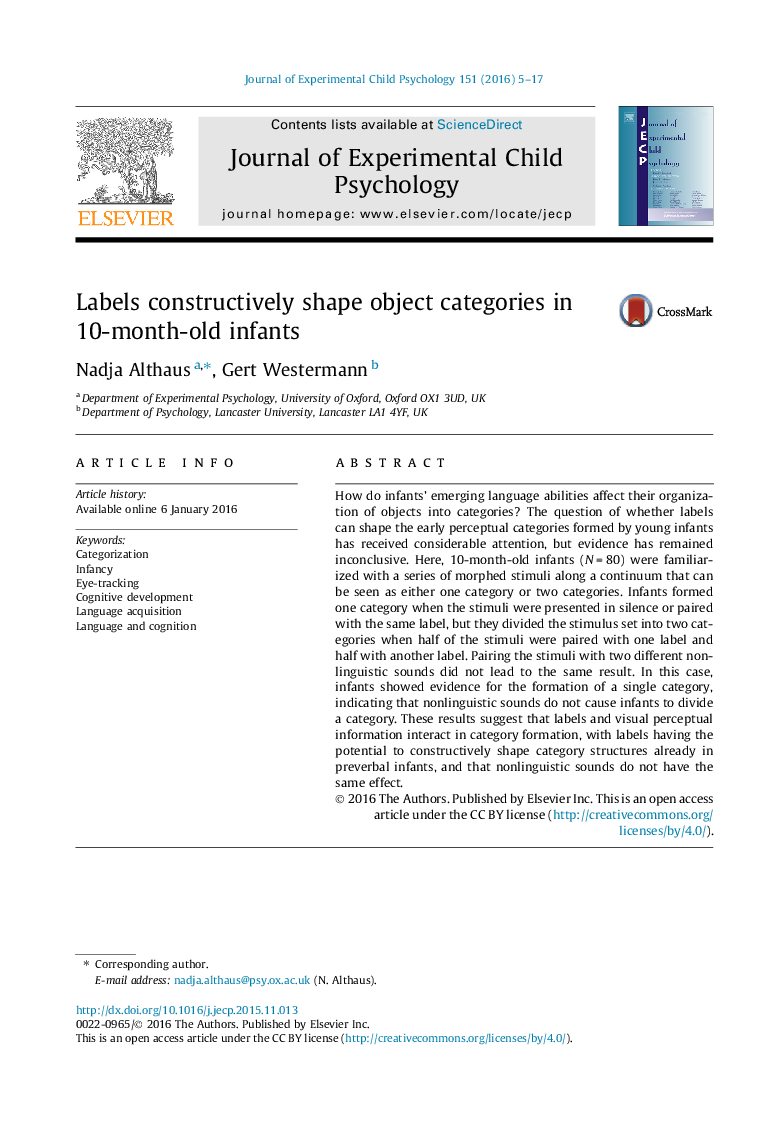| کد مقاله | کد نشریه | سال انتشار | مقاله انگلیسی | نسخه تمام متن |
|---|---|---|---|---|
| 5040082 | 1473461 | 2016 | 13 صفحه PDF | دانلود رایگان |
- 10-month-olds were familiarized with visual stimuli on a morphing continuum.
- In silence or with a single label infants formed a single category.
- Two separate labels caused infants to divide the stimuli into two categories.
- More visual detail is used with labels than in silence, implying a constructive effect.
- Non-linguistic tones did not cause infants to split the category.
How do infants' emerging language abilities affect their organization of objects into categories? The question of whether labels can shape the early perceptual categories formed by young infants has received considerable attention, but evidence has remained inconclusive. Here, 10-month-old infants (NÂ =Â 80) were familiarized with a series of morphed stimuli along a continuum that can be seen as either one category or two categories. Infants formed one category when the stimuli were presented in silence or paired with the same label, but they divided the stimulus set into two categories when half of the stimuli were paired with one label and half with another label. Pairing the stimuli with two different nonlinguistic sounds did not lead to the same result. In this case, infants showed evidence for the formation of a single category, indicating that nonlinguistic sounds do not cause infants to divide a category. These results suggest that labels and visual perceptual information interact in category formation, with labels having the potential to constructively shape category structures already in preverbal infants, and that nonlinguistic sounds do not have the same effect.
Journal: Journal of Experimental Child Psychology - Volume 151, November 2016, Pages 5-17
